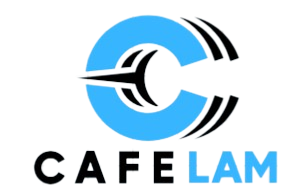In real estate cold calling, timing isn’t everything—but it’s close. The success of your outreach depends not just on what you say or how many dials you make, but when you make them.
The modern world moves fast, and so do real estate prospects. Schedules shift, attention spans shrink, and digital distractions are everywhere. If you’re calling at the wrong time, even the best pitch can go unheard.
This year, the emphasis is shifting from quantity to precision. Cold calling strategies that prioritize timing—not just effort—are the ones seeing real traction.
So, what does a smart calling schedule look like in 2025? Let’s break it down.
The Psychology Behind Timing
Most people answer calls based on mental availability, not just physical presence. Even if someone has their phone on them, they won’t engage unless their brain is ready to process the conversation.
Timing your call around decision-making energy—not just open schedules—can lead to more productive conversations. Early in the day, many are focused and goal-driven. Midday, energy drops. Late in the day, people may become more open to discussions, but less likely to act immediately.
Understanding this rhythm helps align your call to the moment someone is most likely to receive, not just answer.
Best Time of Day: When the Conversation Flows
Industry patterns, behavioral research, and feedback from experienced calling teams suggest three core time windows for successful outreach.
1. Morning Warm-Up: 8:00 AM – 10:30 AM
Early morning is ideal for speaking to professionals before their day fills up. Business owners, agents, and executives are often more focused at this time, checking voicemails and emails with a clear mind.
Calls made before 9:00 AM may catch some off guard, but post-8:00 AM tends to be productive—especially if your message is sharp and respectful of their time.
2. Late Morning Window: 10:30 AM – 12:00 PM
This window sits just before lunch and typically offers a second burst of productivity. People are still in their work mindset but less tightly scheduled. If you missed them earlier, now’s a strong second shot.
Real estate cold calling tends to perform well in this window for both buyers and sellers who work from home or manage their own schedules.
3. Late Afternoon Return: 4:00 PM – 6:00 PM
While mid-afternoon (2–4 PM) often produces lower engagement, the hours leading into the evening are surprisingly strong. People are winding down, shifting gears, and more receptive to quick, direct conversations.
This is a prime time for follow-up calls or reaching those who didn’t answer earlier.
Worst Time of Day: Avoiding Dead Zones
Timing mistakes can tank a campaign. Here’s when not to call:
- 12:00 PM – 2:00 PM: Lunchtime hours often yield low connect rates. Even remote workers are stepping away from their desks.
- Immediately after hours: Calls after 6:30 PM run the risk of irritating prospects. Personal time is sacred, and unsolicited calls feel invasive.
- First 30 minutes of the day: Before 8:00 AM, most people are either commuting or mentally prepping for their own priorities.
Respecting time boundaries shows emotional intelligence—and emotional intelligence converts better than persistence alone.
Best Days of the Week: Play the Calendar Smart
While daily patterns matter, so does the day of the week. Some days invite openness; others feel too hectic or too relaxed for action.
Top Performers:
- Tuesday: This is widely considered the best day for real estate cold calling. The week is in motion, but stress is lower than Monday. Decision-makers are often ready to talk.
- Wednesday: Solid mid-week engagement. Schedules are stable, and momentum from Tuesday carries over.
- Thursday: A close second to Tuesday. There’s urgency, but not the overload of a Friday.
Avoid These:
- Monday: It’s the week’s reset button. Minds are focused on internal priorities, not new conversations.
- Friday: Attention drops fast after 2 PM. Unless you’re following up on a prior interaction, cold introductions often get ignored.
Consider Time Zones and Local Trends
In real estate, geography matters. Calling at 9 AM in one city could mean 6 AM in another. Whether you’re reaching local leads or dialing across regions, always:
- Set up time zone filters in your dialing system
- Track local holidays or event days that may affect availability
- Adjust for seasonal patterns (e.g., school schedules, daylight savings)
Cold calling professionals emphasize the importance of local context in real estate outreach—because calling at the “right time” is only right if it’s local time.
When Should You Follow Up?
Follow-up strategy is just as important as first contact. People rarely commit on the first call. Timing follow-ups well can turn hesitation into interest.
Best follow-up windows:
- 24 hours after initial contact: Keeps the momentum
- 72 hours later (if no response): Allows space without forgetting
- Next week, same day/time: Familiarity with your number may help
Consistency shows professionalism. Don’t chase too hard—but don’t vanish either.
Tools to Track Optimal Timing
To refine your strategy, consider tools that provide call analytics:
- Call tracking software: Reveals when your highest conversion times occur
- CRM integrations: Show engagement patterns by day and time
- A/B testing: Split-test different schedules to fine-tune your timing strategy
Data replaces guesswork. And in a high-contact method like real estate cold calling, that precision makes a measurable difference.
Final Thought: Precision Over Pressure
The old cold calling playbook emphasized volume: make more calls, book more appointments. But in today’s fast-moving world, precision is more valuable than pressure.
Knowing when to call increases connect rates, improves call quality, and earns more positive responses. It’s not about dialing 100 people in one hour—it’s about reaching the right 10, at the right time.
No Accent Callers teaches that successful outreach doesn’t just happen from the script—it happens from strategy. Timing is a strategy. One that turns real estate cold calling into a craft, not just a task.







